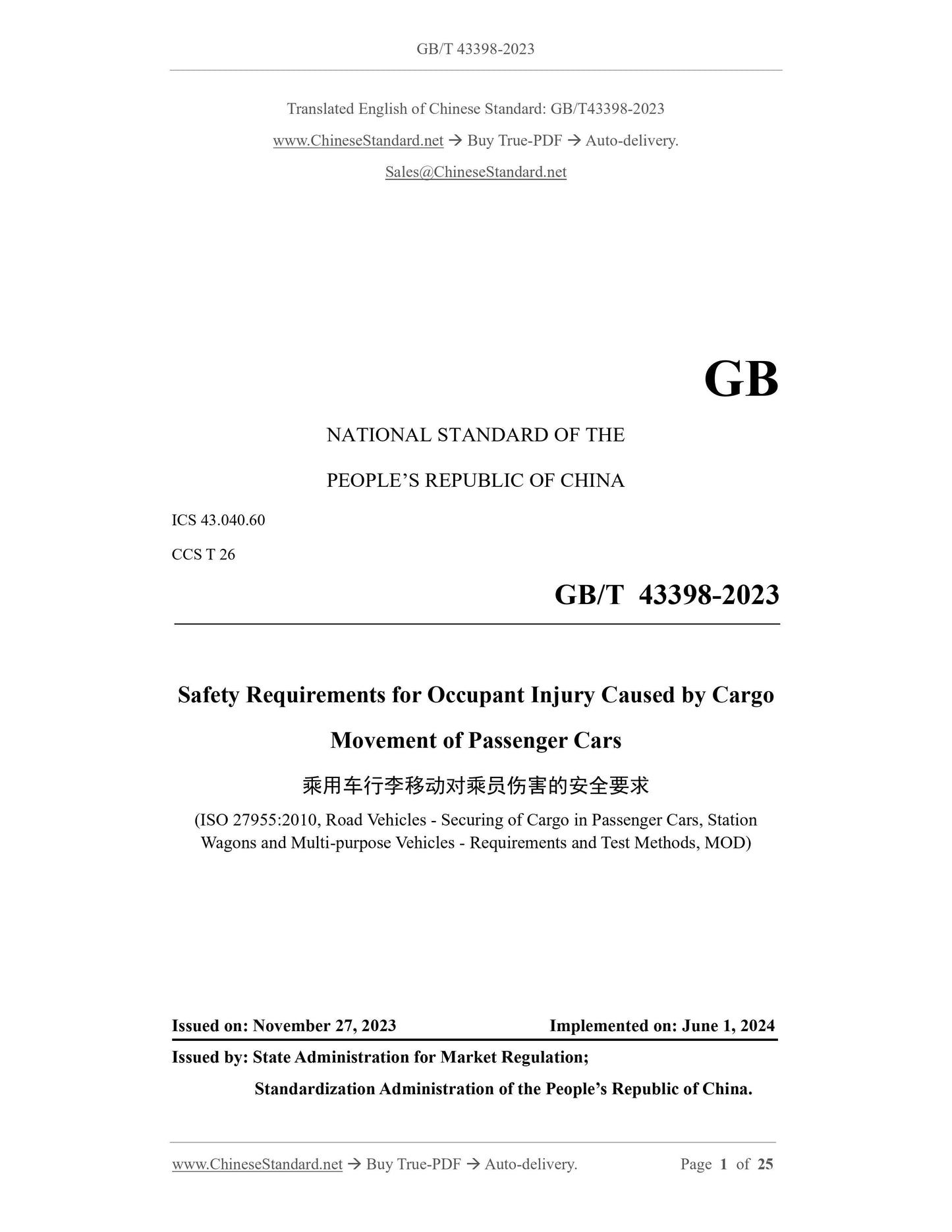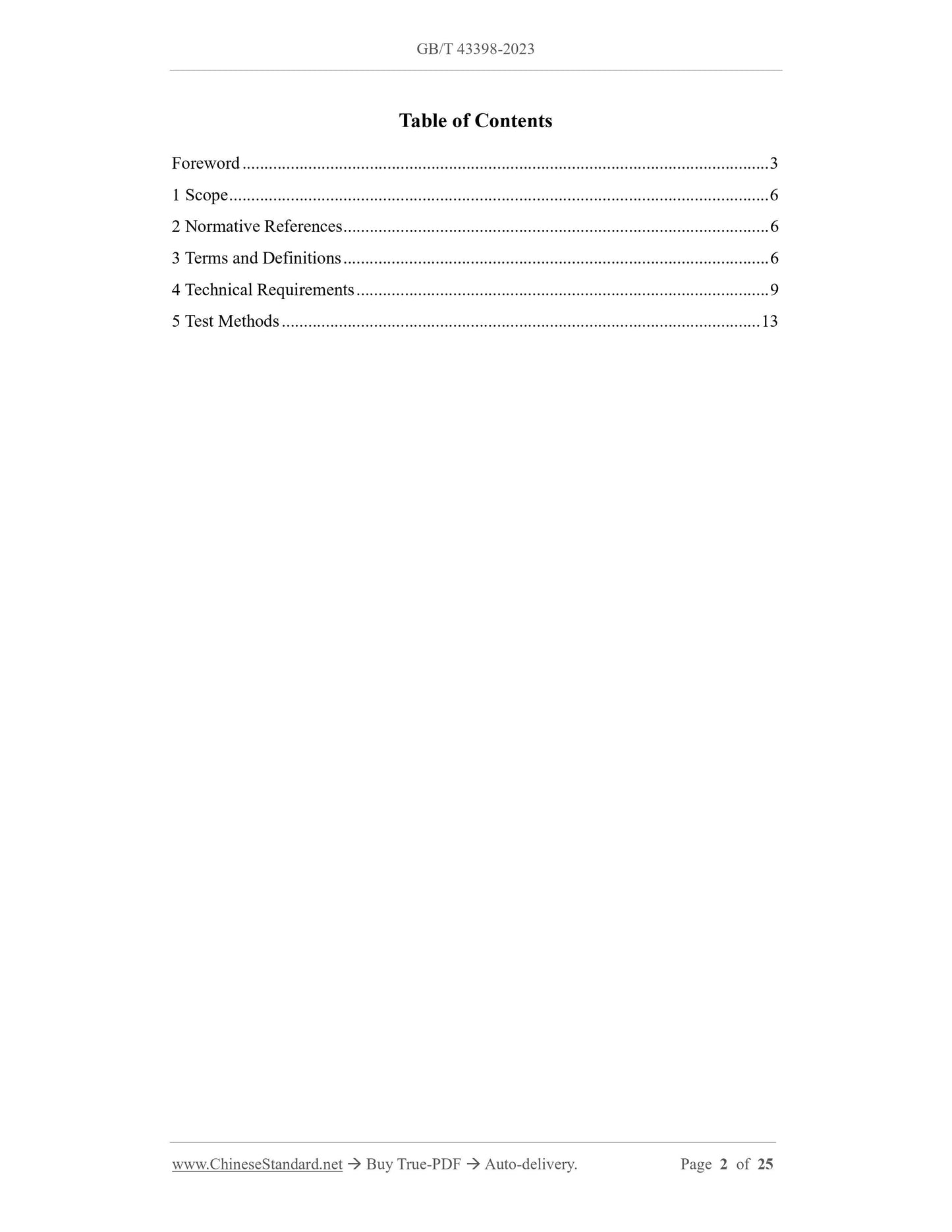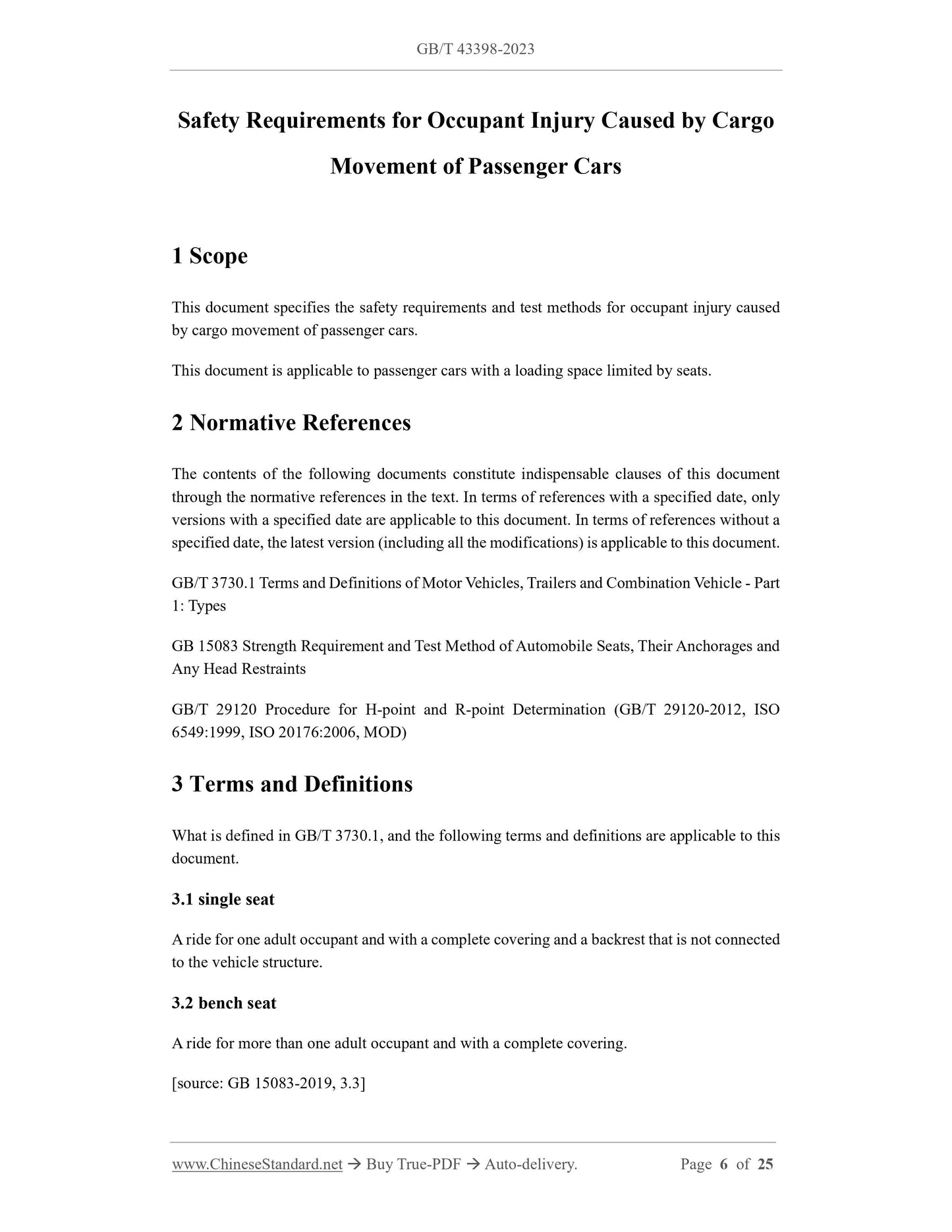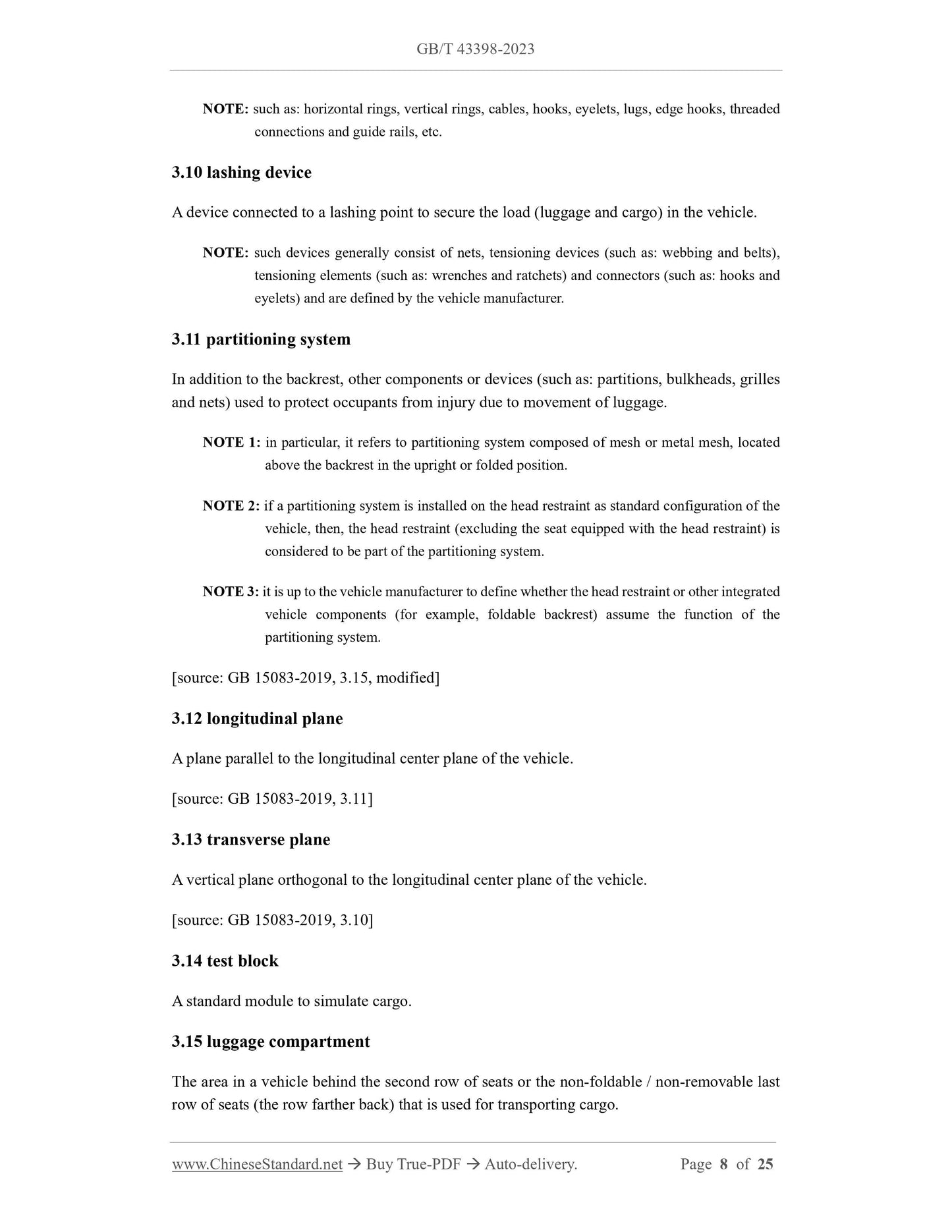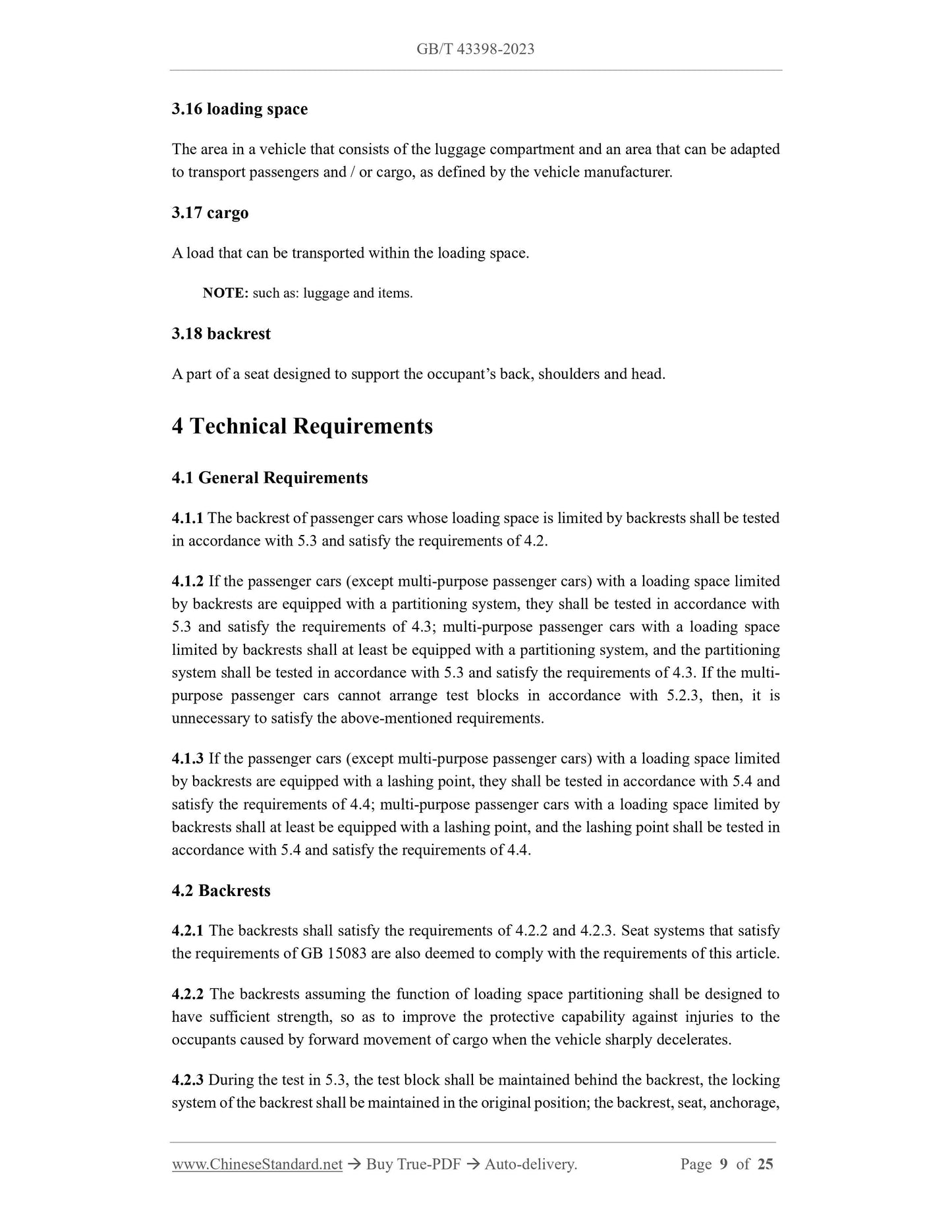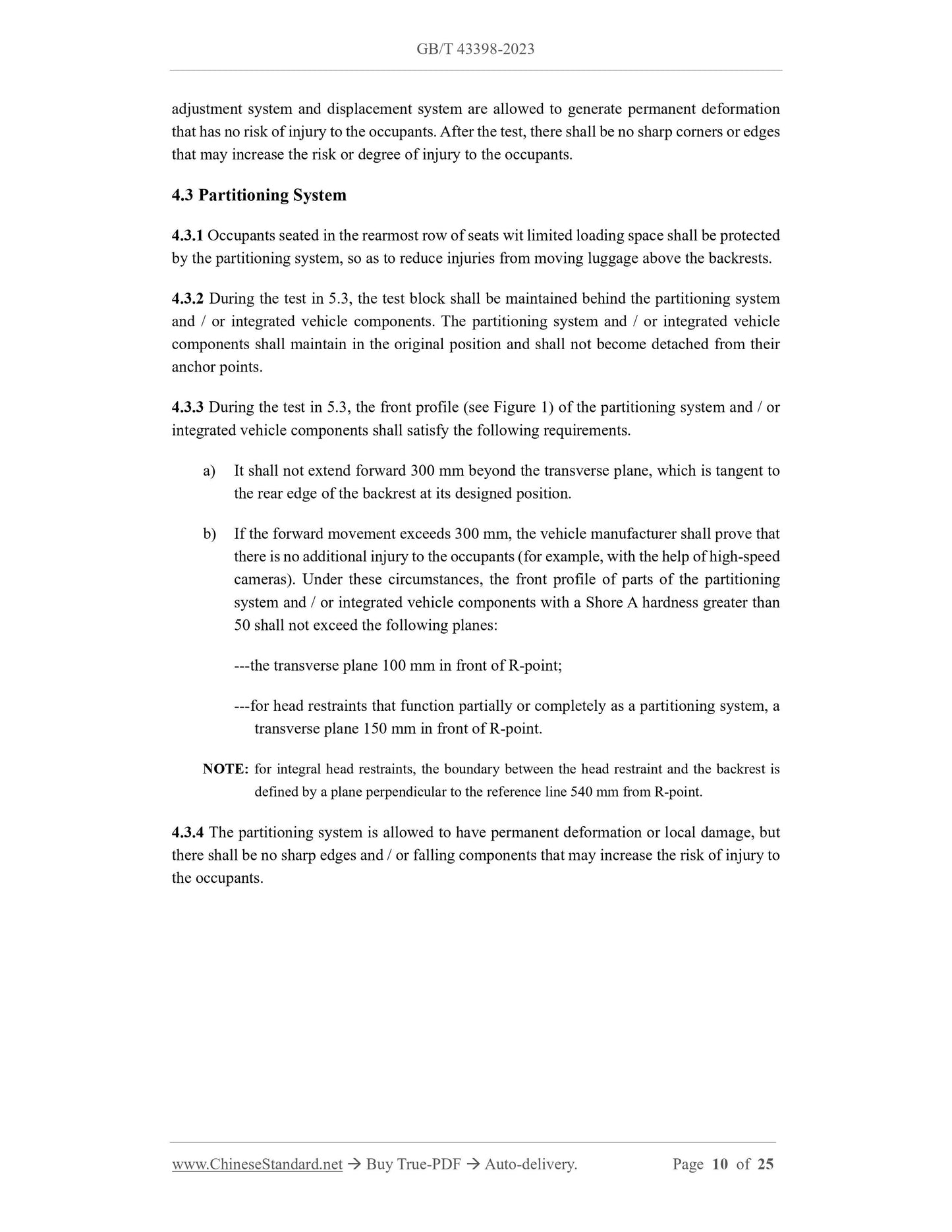1
/
of
6
www.ChineseStandard.us -- Field Test Asia Pte. Ltd.
GB/T 43398-2023 English PDF (GB/T43398-2023)
GB/T 43398-2023 English PDF (GB/T43398-2023)
Regular price
$260.00
Regular price
Sale price
$260.00
Unit price
/
per
Shipping calculated at checkout.
Couldn't load pickup availability
GB/T 43398-2023: Safety requirements for occupant injury caused by cargo movement of passenger cars
Delivery: 9 seconds. Download (and Email) true-PDF + Invoice.Get Quotation: Click GB/T 43398-2023 (Self-service in 1-minute)
Newer / historical versions: GB/T 43398-2023
Preview True-PDF
Scope
This document specifies the safety requirements and test methods for occupant injury causedby cargo movement of passenger cars.
This document is applicable to passenger cars with a loading space limited by seats.
Basic Data
| Standard ID | GB/T 43398-2023 (GB/T43398-2023) |
| Description (Translated English) | Safety requirements for occupant injury caused by cargo movement of passenger cars |
| Sector / Industry | National Standard (Recommended) |
| Classification of Chinese Standard | T26 |
| Classification of International Standard | 43.040.60 |
| Word Count Estimation | 19,124 |
| Date of Issue | 2023-11-27 |
| Date of Implementation | 2024-06-01 |
| Issuing agency(ies) | State Administration for Market Regulation, China National Standardization Administration |
Share
